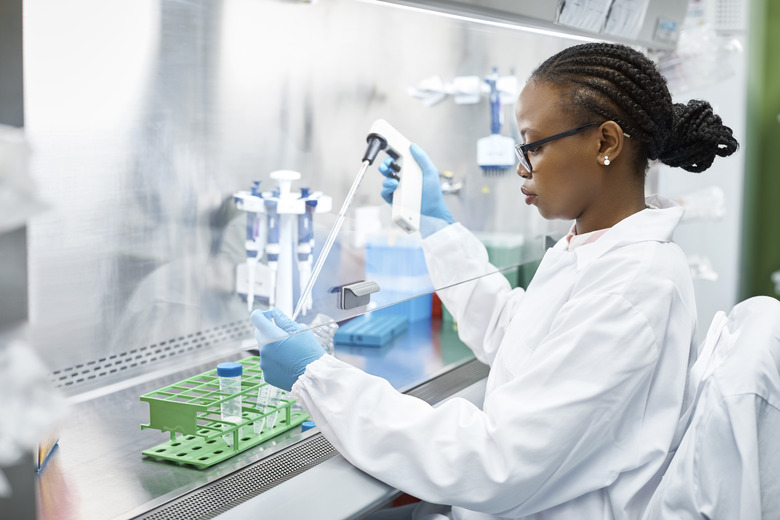What Is Activation Energy?
While some chemical reactions start as soon as the reactants come into contact, for many others, the chemicals fail to react until supplied with an external energy source that can provide the activation energy. There are several reasons reactants in close proximity may not immediately engage in a chemical reaction, but it is important to know which types of reactions require an activation energy, how much energy is required and which reactions proceed immediately. Only then can chemical reactions be initiated and controlled in a safe manner.
TL;DR (Too Long; Didn't Read)
Activation energy is the energy required to start a chemical reaction. Some reactions proceed immediately when the reactants are brought together, but for many others, placing the reactants in close proximity is not enough. An external energy source to supply the activation energy is required for the reaction to proceed.
An Activation Energy Definition
An Activation Energy Definition
To define activation energy, the initiation of chemical reactions has to be analyzed. Such reactions occur when molecules exchange electrons or when ions with opposite charges are brought together. For molecules to exchange electrons, the bonds that keep the electrons tied to a molecule have to be broken. For ions, the positively charged ions have lost an electron. In both cases energy is needed to break the initial bonds.
An external energy source can provide the energy required to dislodge the electrons in question and allow the chemical reaction to proceed. Activation energy units are units such as kilojoules, kilocalories or kilowatt hours. Once the reaction is under way, it releases energy and is self-sustaining. The activation energy is only required at the beginning, to let the chemical reaction start.
Based on this analysis, activation energy is defined as the minimum energy required to start a chemical reaction. When energy is supplied to reactants from an external source, the molecules speed up and collide more violently. The violent collisions knock electrons free, and the resulting atoms or ions react with each other to release energy and keep the reaction going.
Examples of Chemical Reactions Requiring Activation Energy
Examples of Chemical Reactions Requiring Activation Energy
The most common type of reaction requiring activation energy involves many kinds of fire or combustion. These reactions combine oxygen with a material that contains carbon. The carbon has existing molecular bonds with other elements in the fuel while oxygen gas exists as two oxygen atoms bonded together. The carbon and oxygen don't normally react with each other because the existing molecular bonds are too strong to be broken by ordinary molecular collisions. When external energy such as a flame from a match or a spark breaks some of the bonds, the resulting oxygen and carbon atoms react to release energy and keep a fire going until it runs out of fuel.
Another example is hydrogen and oxygen forming an explosive mixture. If hydrogen and oxygen are mixed together at room temperature, nothing happens. Both hydrogen and oxygen gas are made up of molecules with two atoms bonded together. As soon as some of these bonds are broken, for example by a spark, an explosion results. The spark gives a few molecules extra energy so they move more quickly and collide, breaking their bonds. Some oxygen and hydrogen atoms combine to form water molecules, releasing a large amount of energy. This energy speeds up more molecules, breaking more bonds and allowing more atoms to react, resulting in the explosion.
Activation energy is a useful concept when it comes to initiating and controlling chemical reactions. If a reaction requires activation energy, the reactants can be stored together safely, and the corresponding reaction will not take place until the activation energy is supplied from an external source. For chemical reactions that don't need an activation energy, such as metallic sodium and water for example, the reactants must be stored carefully so that they don't come into contact accidentally and cause an uncontrolled reaction.
Cite This Article
MLA
Markgraf, Bert. "What Is Activation Energy?" sciencing.com, https://www.sciencing.com/activation-energy-7203009/. 26 November 2018.
APA
Markgraf, Bert. (2018, November 26). What Is Activation Energy?. sciencing.com. Retrieved from https://www.sciencing.com/activation-energy-7203009/
Chicago
Markgraf, Bert. What Is Activation Energy? last modified August 30, 2022. https://www.sciencing.com/activation-energy-7203009/
